Analyzing Leadership, Management & Operations at Marks & Spencer
VerifiedAdded on 2024/04/24
|21
|3927
|419
Report
AI Summary
This report provides a comprehensive analysis of leadership and management roles within Marks & Spencer (M&S), a multinational retailer. It defines and compares the roles of leaders and managers, examining their functions in various situational contexts using examples from M&S. The report applies different leadership theories, including situational leadership, systems leadership, and contingency approaches. It also explains key approaches to operations management, highlighting the importance of operational management in achieving business activities. Furthermore, the report assesses the factors impacting operational management and decision-making by managers and leaders within the organization, emphasizing the vital role of effective leadership and management in M&S's success.

MANAGEMENT AND OPERATIONS
Paraphrase This Document
Need a fresh take? Get an instant paraphrase of this document with our AI Paraphraser
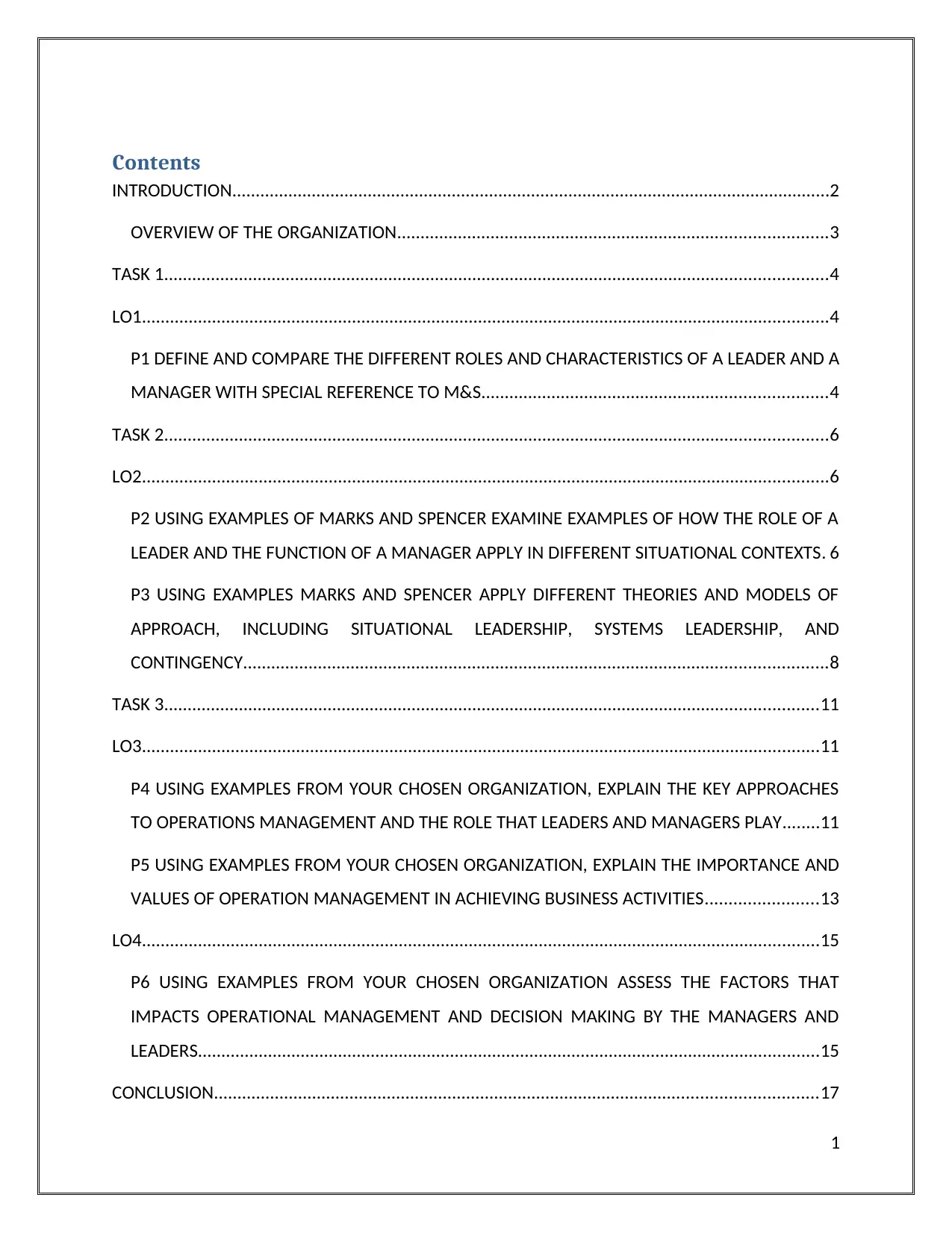
Contents
INTRODUCTION................................................................................................................................2
OVERVIEW OF THE ORGANIZATION............................................................................................3
TASK 1..............................................................................................................................................4
LO1...................................................................................................................................................4
P1 DEFINE AND COMPARE THE DIFFERENT ROLES AND CHARACTERISTICS OF A LEADER AND A
MANAGER WITH SPECIAL REFERENCE TO M&S..........................................................................4
TASK 2..............................................................................................................................................6
LO2...................................................................................................................................................6
P2 USING EXAMPLES OF MARKS AND SPENCER EXAMINE EXAMPLES OF HOW THE ROLE OF A
LEADER AND THE FUNCTION OF A MANAGER APPLY IN DIFFERENT SITUATIONAL CONTEXTS. 6
P3 USING EXAMPLES MARKS AND SPENCER APPLY DIFFERENT THEORIES AND MODELS OF
APPROACH, INCLUDING SITUATIONAL LEADERSHIP, SYSTEMS LEADERSHIP, AND
CONTINGENCY.............................................................................................................................8
TASK 3............................................................................................................................................11
LO3.................................................................................................................................................11
P4 USING EXAMPLES FROM YOUR CHOSEN ORGANIZATION, EXPLAIN THE KEY APPROACHES
TO OPERATIONS MANAGEMENT AND THE ROLE THAT LEADERS AND MANAGERS PLAY........11
P5 USING EXAMPLES FROM YOUR CHOSEN ORGANIZATION, EXPLAIN THE IMPORTANCE AND
VALUES OF OPERATION MANAGEMENT IN ACHIEVING BUSINESS ACTIVITIES........................13
LO4.................................................................................................................................................15
P6 USING EXAMPLES FROM YOUR CHOSEN ORGANIZATION ASSESS THE FACTORS THAT
IMPACTS OPERATIONAL MANAGEMENT AND DECISION MAKING BY THE MANAGERS AND
LEADERS.....................................................................................................................................15
CONCLUSION.................................................................................................................................17
1
INTRODUCTION................................................................................................................................2
OVERVIEW OF THE ORGANIZATION............................................................................................3
TASK 1..............................................................................................................................................4
LO1...................................................................................................................................................4
P1 DEFINE AND COMPARE THE DIFFERENT ROLES AND CHARACTERISTICS OF A LEADER AND A
MANAGER WITH SPECIAL REFERENCE TO M&S..........................................................................4
TASK 2..............................................................................................................................................6
LO2...................................................................................................................................................6
P2 USING EXAMPLES OF MARKS AND SPENCER EXAMINE EXAMPLES OF HOW THE ROLE OF A
LEADER AND THE FUNCTION OF A MANAGER APPLY IN DIFFERENT SITUATIONAL CONTEXTS. 6
P3 USING EXAMPLES MARKS AND SPENCER APPLY DIFFERENT THEORIES AND MODELS OF
APPROACH, INCLUDING SITUATIONAL LEADERSHIP, SYSTEMS LEADERSHIP, AND
CONTINGENCY.............................................................................................................................8
TASK 3............................................................................................................................................11
LO3.................................................................................................................................................11
P4 USING EXAMPLES FROM YOUR CHOSEN ORGANIZATION, EXPLAIN THE KEY APPROACHES
TO OPERATIONS MANAGEMENT AND THE ROLE THAT LEADERS AND MANAGERS PLAY........11
P5 USING EXAMPLES FROM YOUR CHOSEN ORGANIZATION, EXPLAIN THE IMPORTANCE AND
VALUES OF OPERATION MANAGEMENT IN ACHIEVING BUSINESS ACTIVITIES........................13
LO4.................................................................................................................................................15
P6 USING EXAMPLES FROM YOUR CHOSEN ORGANIZATION ASSESS THE FACTORS THAT
IMPACTS OPERATIONAL MANAGEMENT AND DECISION MAKING BY THE MANAGERS AND
LEADERS.....................................................................................................................................15
CONCLUSION.................................................................................................................................17
1
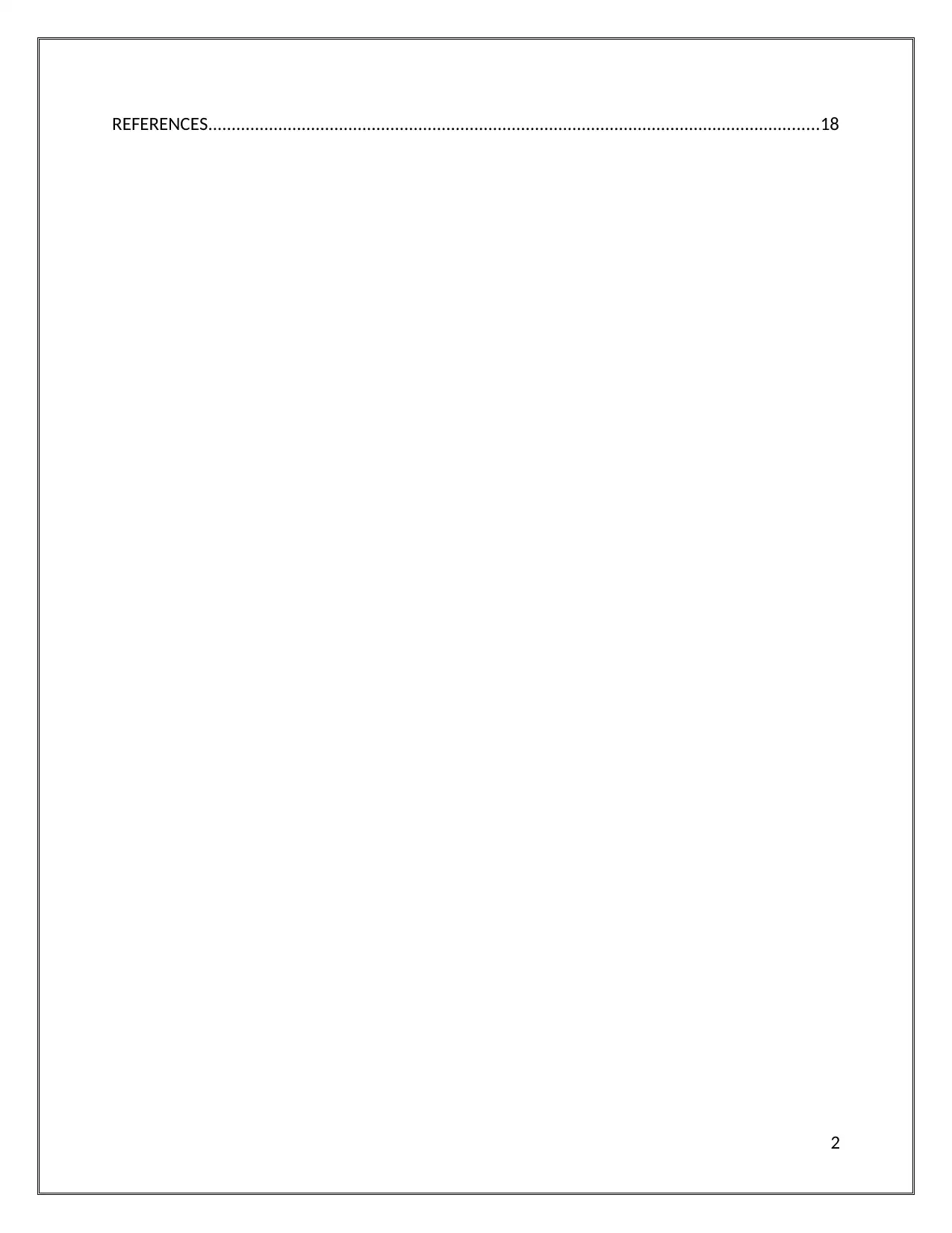
REFERENCES...................................................................................................................................18
2
2
⊘ This is a preview!⊘
Do you want full access?
Subscribe today to unlock all pages.

Trusted by 1+ million students worldwide
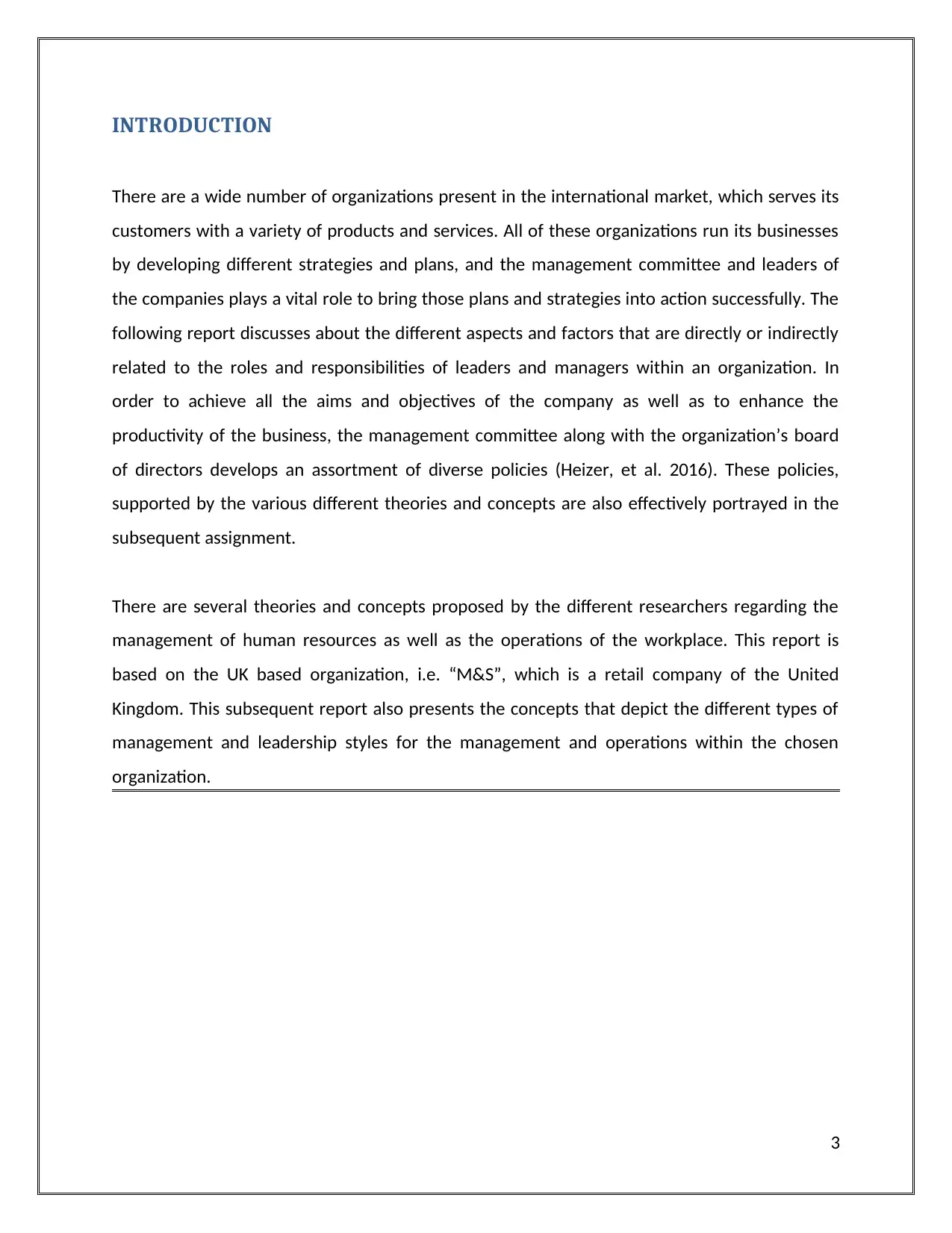
INTRODUCTION
There are a wide number of organizations present in the international market, which serves its
customers with a variety of products and services. All of these organizations run its businesses
by developing different strategies and plans, and the management committee and leaders of
the companies plays a vital role to bring those plans and strategies into action successfully. The
following report discusses about the different aspects and factors that are directly or indirectly
related to the roles and responsibilities of leaders and managers within an organization. In
order to achieve all the aims and objectives of the company as well as to enhance the
productivity of the business, the management committee along with the organization’s board
of directors develops an assortment of diverse policies (Heizer, et al. 2016). These policies,
supported by the various different theories and concepts are also effectively portrayed in the
subsequent assignment.
There are several theories and concepts proposed by the different researchers regarding the
management of human resources as well as the operations of the workplace. This report is
based on the UK based organization, i.e. “M&S”, which is a retail company of the United
Kingdom. This subsequent report also presents the concepts that depict the different types of
management and leadership styles for the management and operations within the chosen
organization.
3
There are a wide number of organizations present in the international market, which serves its
customers with a variety of products and services. All of these organizations run its businesses
by developing different strategies and plans, and the management committee and leaders of
the companies plays a vital role to bring those plans and strategies into action successfully. The
following report discusses about the different aspects and factors that are directly or indirectly
related to the roles and responsibilities of leaders and managers within an organization. In
order to achieve all the aims and objectives of the company as well as to enhance the
productivity of the business, the management committee along with the organization’s board
of directors develops an assortment of diverse policies (Heizer, et al. 2016). These policies,
supported by the various different theories and concepts are also effectively portrayed in the
subsequent assignment.
There are several theories and concepts proposed by the different researchers regarding the
management of human resources as well as the operations of the workplace. This report is
based on the UK based organization, i.e. “M&S”, which is a retail company of the United
Kingdom. This subsequent report also presents the concepts that depict the different types of
management and leadership styles for the management and operations within the chosen
organization.
3
Paraphrase This Document
Need a fresh take? Get an instant paraphrase of this document with our AI Paraphraser
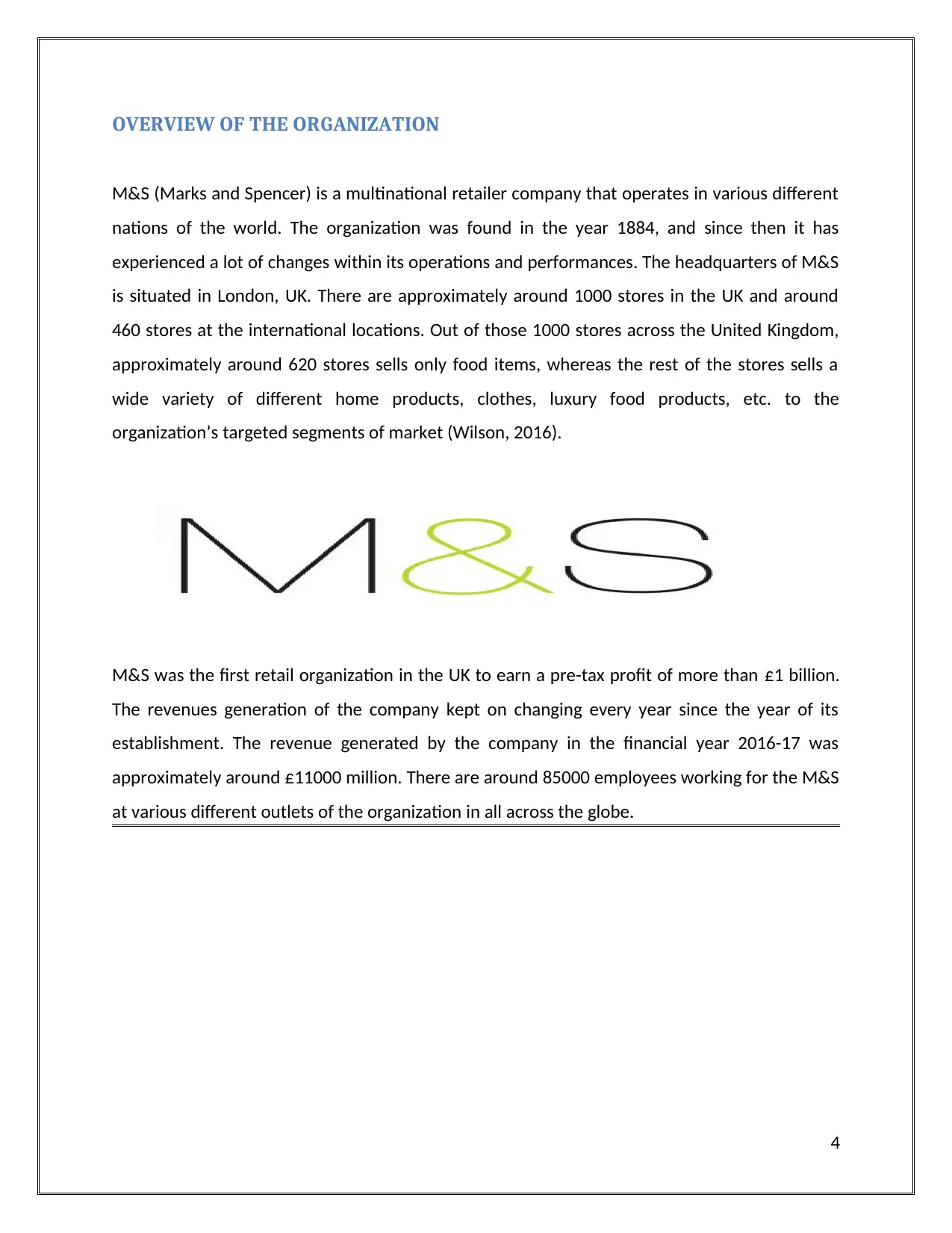
OVERVIEW OF THE ORGANIZATION
M&S (Marks and Spencer) is a multinational retailer company that operates in various different
nations of the world. The organization was found in the year 1884, and since then it has
experienced a lot of changes within its operations and performances. The headquarters of M&S
is situated in London, UK. There are approximately around 1000 stores in the UK and around
460 stores at the international locations. Out of those 1000 stores across the United Kingdom,
approximately around 620 stores sells only food items, whereas the rest of the stores sells a
wide variety of different home products, clothes, luxury food products, etc. to the
organization’s targeted segments of market (Wilson, 2016).
M&S was the first retail organization in the UK to earn a pre-tax profit of more than £1 billion.
The revenues generation of the company kept on changing every year since the year of its
establishment. The revenue generated by the company in the financial year 2016-17 was
approximately around £11000 million. There are around 85000 employees working for the M&S
at various different outlets of the organization in all across the globe.
4
M&S (Marks and Spencer) is a multinational retailer company that operates in various different
nations of the world. The organization was found in the year 1884, and since then it has
experienced a lot of changes within its operations and performances. The headquarters of M&S
is situated in London, UK. There are approximately around 1000 stores in the UK and around
460 stores at the international locations. Out of those 1000 stores across the United Kingdom,
approximately around 620 stores sells only food items, whereas the rest of the stores sells a
wide variety of different home products, clothes, luxury food products, etc. to the
organization’s targeted segments of market (Wilson, 2016).
M&S was the first retail organization in the UK to earn a pre-tax profit of more than £1 billion.
The revenues generation of the company kept on changing every year since the year of its
establishment. The revenue generated by the company in the financial year 2016-17 was
approximately around £11000 million. There are around 85000 employees working for the M&S
at various different outlets of the organization in all across the globe.
4
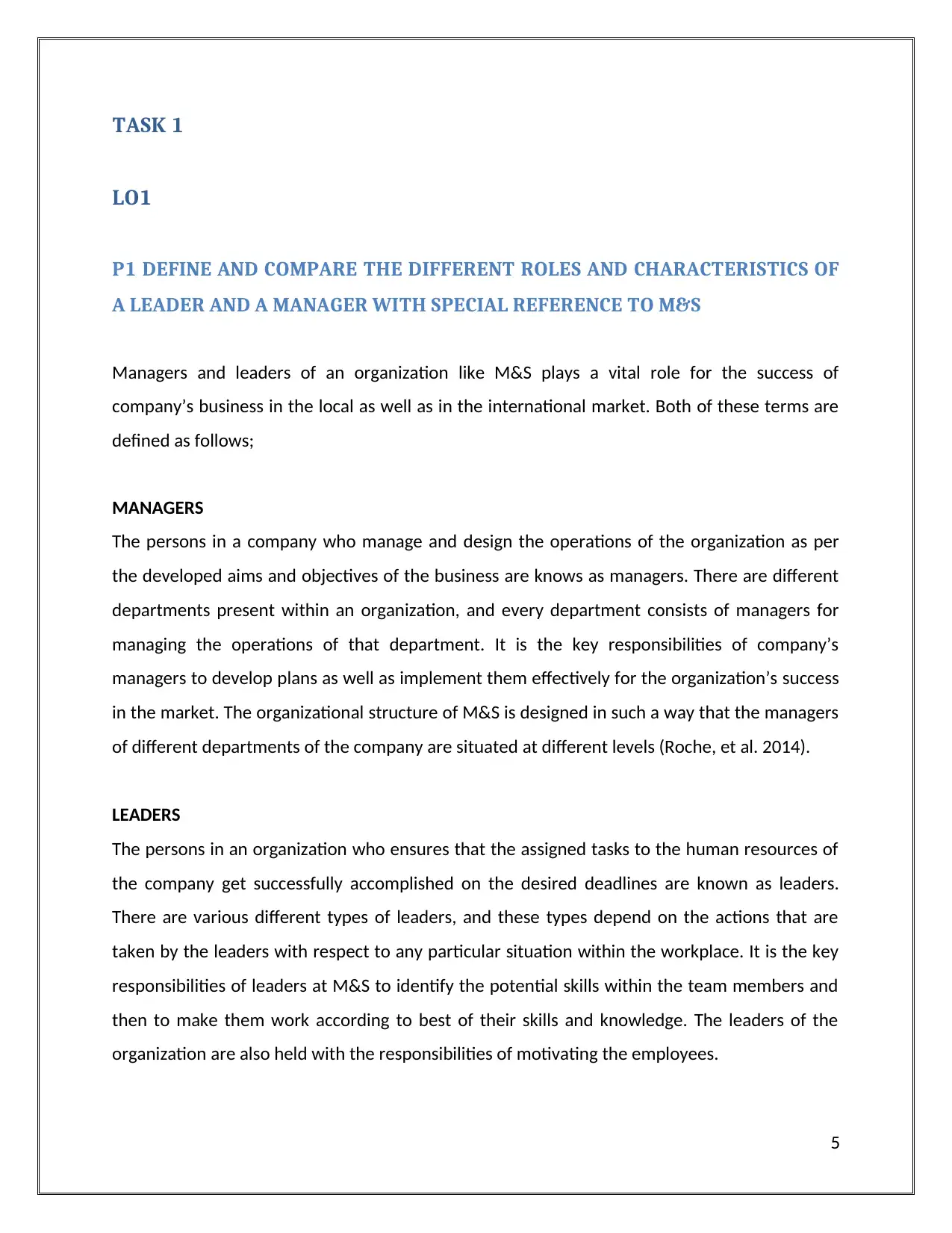
TASK 1
LO1
P1 DEFINE AND COMPARE THE DIFFERENT ROLES AND CHARACTERISTICS OF
A LEADER AND A MANAGER WITH SPECIAL REFERENCE TO M&S
Managers and leaders of an organization like M&S plays a vital role for the success of
company’s business in the local as well as in the international market. Both of these terms are
defined as follows;
MANAGERS
The persons in a company who manage and design the operations of the organization as per
the developed aims and objectives of the business are knows as managers. There are different
departments present within an organization, and every department consists of managers for
managing the operations of that department. It is the key responsibilities of company’s
managers to develop plans as well as implement them effectively for the organization’s success
in the market. The organizational structure of M&S is designed in such a way that the managers
of different departments of the company are situated at different levels (Roche, et al. 2014).
LEADERS
The persons in an organization who ensures that the assigned tasks to the human resources of
the company get successfully accomplished on the desired deadlines are known as leaders.
There are various different types of leaders, and these types depend on the actions that are
taken by the leaders with respect to any particular situation within the workplace. It is the key
responsibilities of leaders at M&S to identify the potential skills within the team members and
then to make them work according to best of their skills and knowledge. The leaders of the
organization are also held with the responsibilities of motivating the employees.
5
LO1
P1 DEFINE AND COMPARE THE DIFFERENT ROLES AND CHARACTERISTICS OF
A LEADER AND A MANAGER WITH SPECIAL REFERENCE TO M&S
Managers and leaders of an organization like M&S plays a vital role for the success of
company’s business in the local as well as in the international market. Both of these terms are
defined as follows;
MANAGERS
The persons in a company who manage and design the operations of the organization as per
the developed aims and objectives of the business are knows as managers. There are different
departments present within an organization, and every department consists of managers for
managing the operations of that department. It is the key responsibilities of company’s
managers to develop plans as well as implement them effectively for the organization’s success
in the market. The organizational structure of M&S is designed in such a way that the managers
of different departments of the company are situated at different levels (Roche, et al. 2014).
LEADERS
The persons in an organization who ensures that the assigned tasks to the human resources of
the company get successfully accomplished on the desired deadlines are known as leaders.
There are various different types of leaders, and these types depend on the actions that are
taken by the leaders with respect to any particular situation within the workplace. It is the key
responsibilities of leaders at M&S to identify the potential skills within the team members and
then to make them work according to best of their skills and knowledge. The leaders of the
organization are also held with the responsibilities of motivating the employees.
5
⊘ This is a preview!⊘
Do you want full access?
Subscribe today to unlock all pages.

Trusted by 1+ million students worldwide
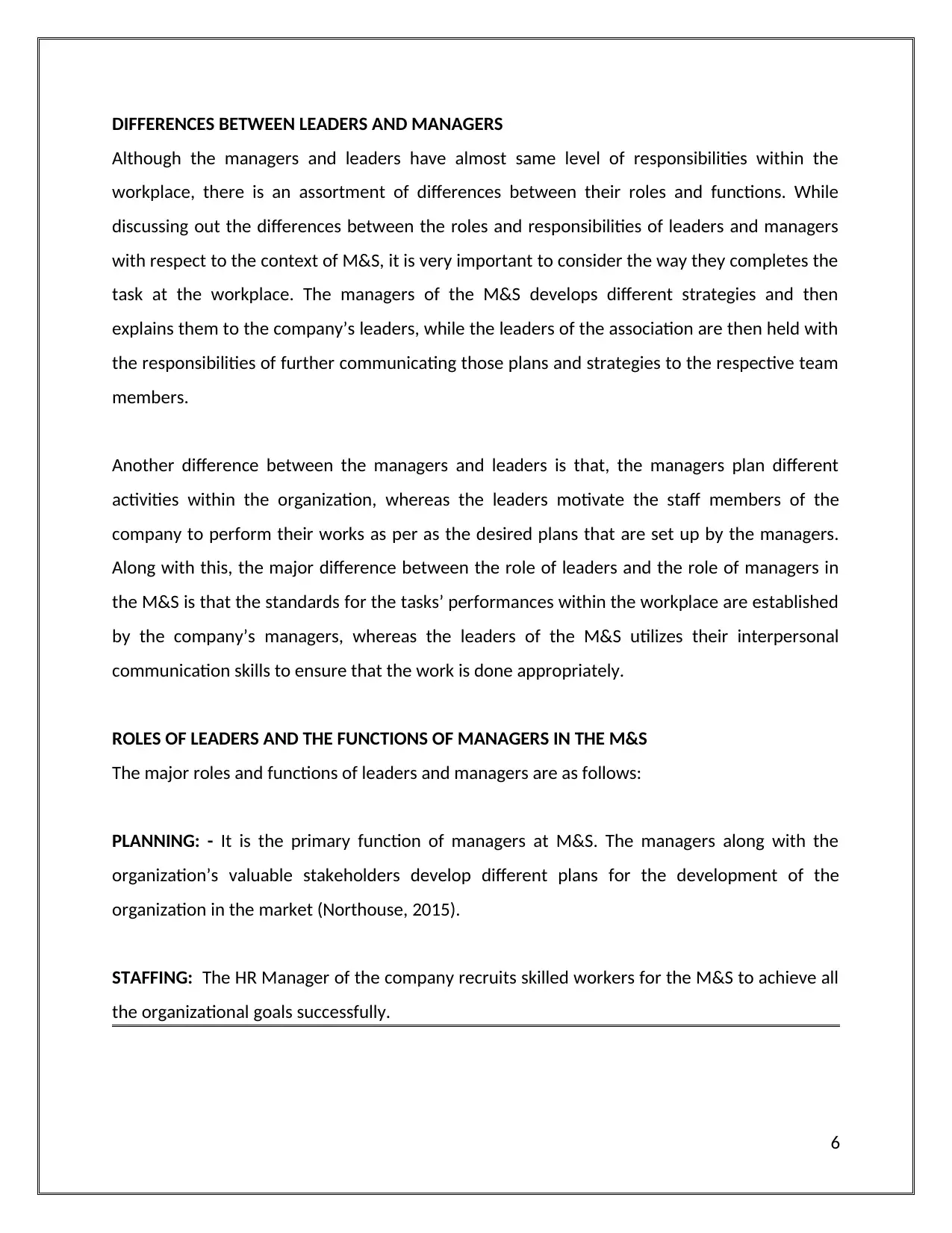
DIFFERENCES BETWEEN LEADERS AND MANAGERS
Although the managers and leaders have almost same level of responsibilities within the
workplace, there is an assortment of differences between their roles and functions. While
discussing out the differences between the roles and responsibilities of leaders and managers
with respect to the context of M&S, it is very important to consider the way they completes the
task at the workplace. The managers of the M&S develops different strategies and then
explains them to the company’s leaders, while the leaders of the association are then held with
the responsibilities of further communicating those plans and strategies to the respective team
members.
Another difference between the managers and leaders is that, the managers plan different
activities within the organization, whereas the leaders motivate the staff members of the
company to perform their works as per as the desired plans that are set up by the managers.
Along with this, the major difference between the role of leaders and the role of managers in
the M&S is that the standards for the tasks’ performances within the workplace are established
by the company’s managers, whereas the leaders of the M&S utilizes their interpersonal
communication skills to ensure that the work is done appropriately.
ROLES OF LEADERS AND THE FUNCTIONS OF MANAGERS IN THE M&S
The major roles and functions of leaders and managers are as follows:
PLANNING: - It is the primary function of managers at M&S. The managers along with the
organization’s valuable stakeholders develop different plans for the development of the
organization in the market (Northouse, 2015).
STAFFING: The HR Manager of the company recruits skilled workers for the M&S to achieve all
the organizational goals successfully.
6
Although the managers and leaders have almost same level of responsibilities within the
workplace, there is an assortment of differences between their roles and functions. While
discussing out the differences between the roles and responsibilities of leaders and managers
with respect to the context of M&S, it is very important to consider the way they completes the
task at the workplace. The managers of the M&S develops different strategies and then
explains them to the company’s leaders, while the leaders of the association are then held with
the responsibilities of further communicating those plans and strategies to the respective team
members.
Another difference between the managers and leaders is that, the managers plan different
activities within the organization, whereas the leaders motivate the staff members of the
company to perform their works as per as the desired plans that are set up by the managers.
Along with this, the major difference between the role of leaders and the role of managers in
the M&S is that the standards for the tasks’ performances within the workplace are established
by the company’s managers, whereas the leaders of the M&S utilizes their interpersonal
communication skills to ensure that the work is done appropriately.
ROLES OF LEADERS AND THE FUNCTIONS OF MANAGERS IN THE M&S
The major roles and functions of leaders and managers are as follows:
PLANNING: - It is the primary function of managers at M&S. The managers along with the
organization’s valuable stakeholders develop different plans for the development of the
organization in the market (Northouse, 2015).
STAFFING: The HR Manager of the company recruits skilled workers for the M&S to achieve all
the organizational goals successfully.
6
Paraphrase This Document
Need a fresh take? Get an instant paraphrase of this document with our AI Paraphraser
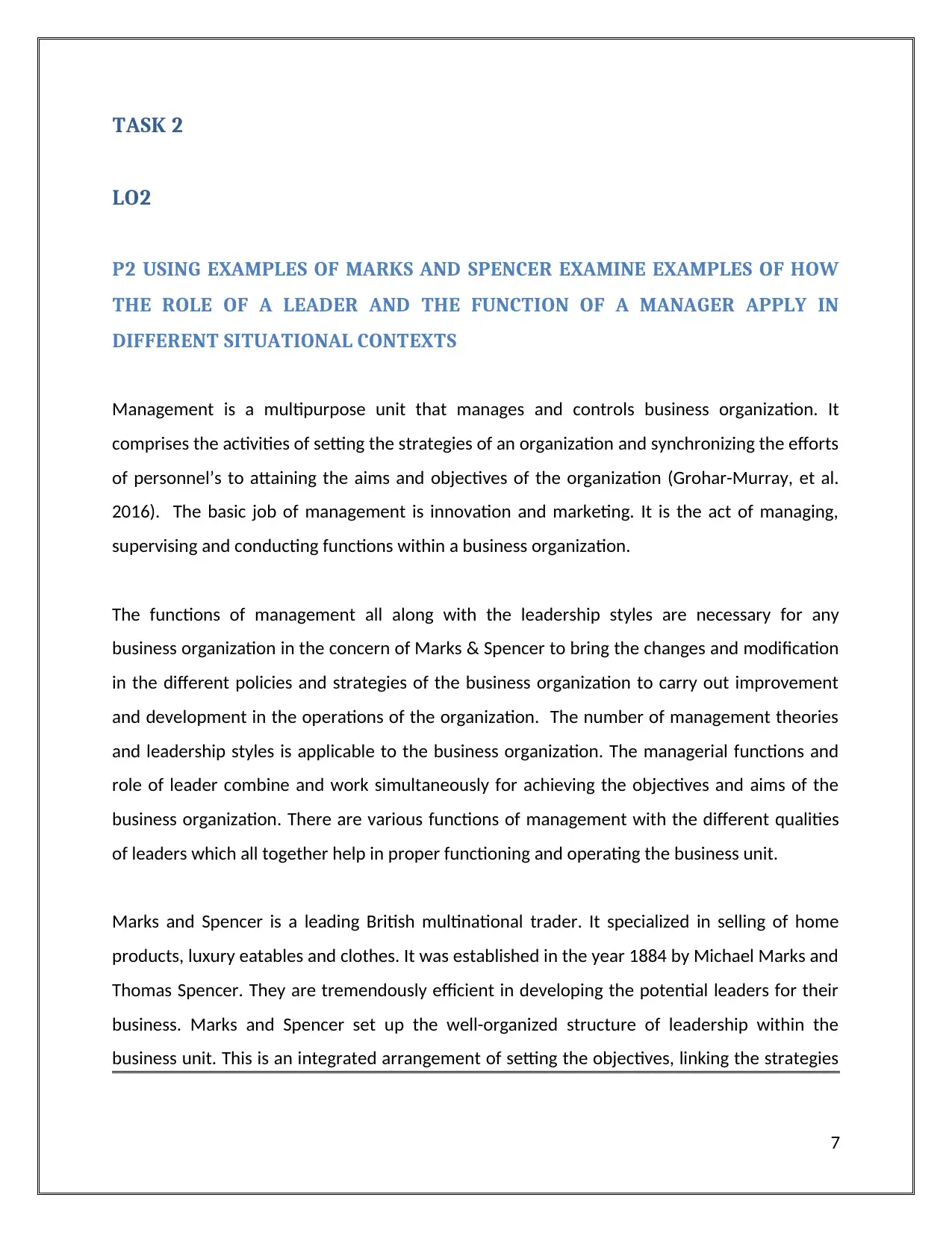
TASK 2
LO2
P2 USING EXAMPLES OF MARKS AND SPENCER EXAMINE EXAMPLES OF HOW
THE ROLE OF A LEADER AND THE FUNCTION OF A MANAGER APPLY IN
DIFFERENT SITUATIONAL CONTEXTS
Management is a multipurpose unit that manages and controls business organization. It
comprises the activities of setting the strategies of an organization and synchronizing the efforts
of personnel’s to attaining the aims and objectives of the organization (Grohar-Murray, et al.
2016). The basic job of management is innovation and marketing. It is the act of managing,
supervising and conducting functions within a business organization.
The functions of management all along with the leadership styles are necessary for any
business organization in the concern of Marks & Spencer to bring the changes and modification
in the different policies and strategies of the business organization to carry out improvement
and development in the operations of the organization. The number of management theories
and leadership styles is applicable to the business organization. The managerial functions and
role of leader combine and work simultaneously for achieving the objectives and aims of the
business organization. There are various functions of management with the different qualities
of leaders which all together help in proper functioning and operating the business unit.
Marks and Spencer is a leading British multinational trader. It specialized in selling of home
products, luxury eatables and clothes. It was established in the year 1884 by Michael Marks and
Thomas Spencer. They are tremendously efficient in developing the potential leaders for their
business. Marks and Spencer set up the well-organized structure of leadership within the
business unit. This is an integrated arrangement of setting the objectives, linking the strategies
7
LO2
P2 USING EXAMPLES OF MARKS AND SPENCER EXAMINE EXAMPLES OF HOW
THE ROLE OF A LEADER AND THE FUNCTION OF A MANAGER APPLY IN
DIFFERENT SITUATIONAL CONTEXTS
Management is a multipurpose unit that manages and controls business organization. It
comprises the activities of setting the strategies of an organization and synchronizing the efforts
of personnel’s to attaining the aims and objectives of the organization (Grohar-Murray, et al.
2016). The basic job of management is innovation and marketing. It is the act of managing,
supervising and conducting functions within a business organization.
The functions of management all along with the leadership styles are necessary for any
business organization in the concern of Marks & Spencer to bring the changes and modification
in the different policies and strategies of the business organization to carry out improvement
and development in the operations of the organization. The number of management theories
and leadership styles is applicable to the business organization. The managerial functions and
role of leader combine and work simultaneously for achieving the objectives and aims of the
business organization. There are various functions of management with the different qualities
of leaders which all together help in proper functioning and operating the business unit.
Marks and Spencer is a leading British multinational trader. It specialized in selling of home
products, luxury eatables and clothes. It was established in the year 1884 by Michael Marks and
Thomas Spencer. They are tremendously efficient in developing the potential leaders for their
business. Marks and Spencer set up the well-organized structure of leadership within the
business unit. This is an integrated arrangement of setting the objectives, linking the strategies
7
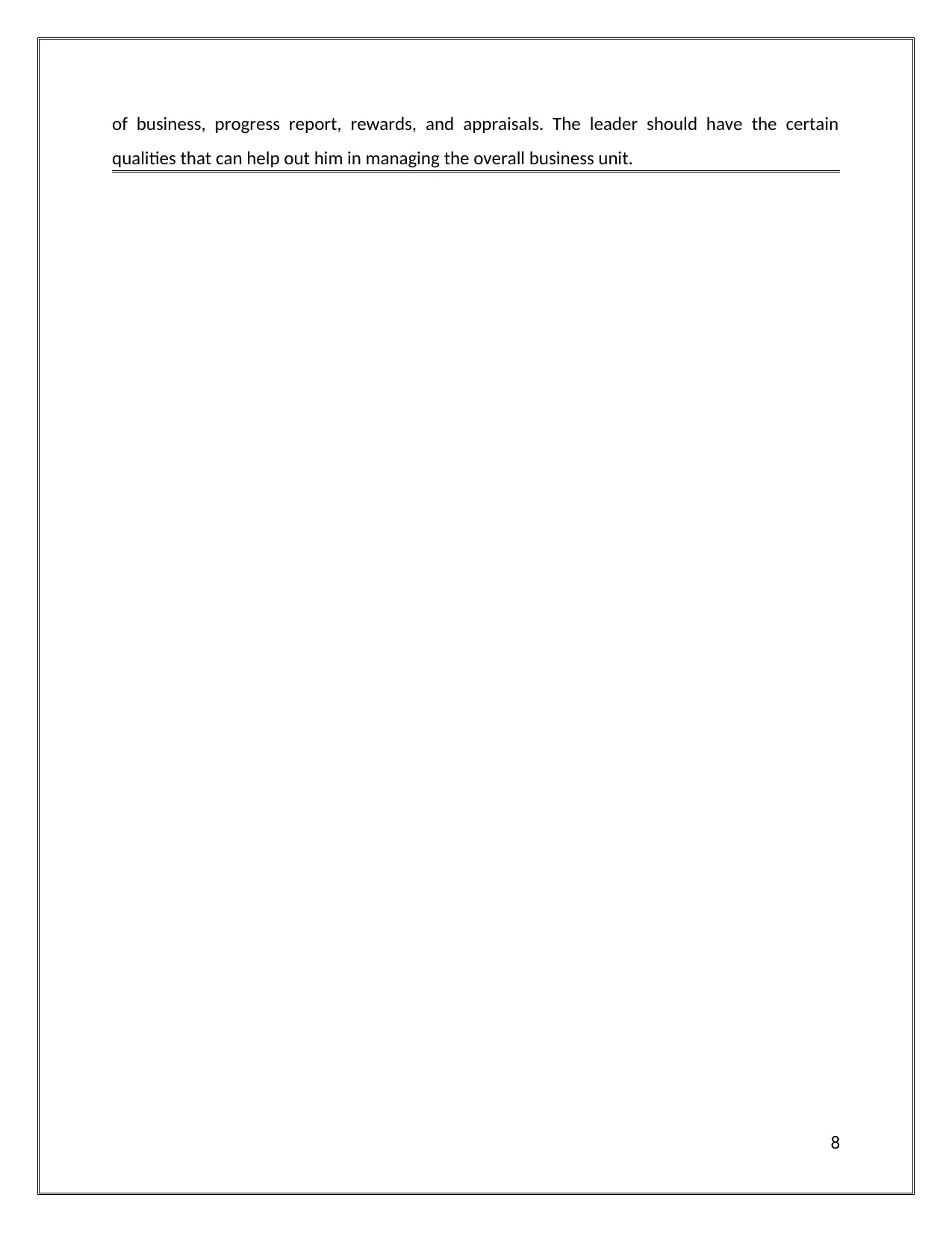
of business, progress report, rewards, and appraisals. The leader should have the certain
qualities that can help out him in managing the overall business unit.
8
qualities that can help out him in managing the overall business unit.
8
⊘ This is a preview!⊘
Do you want full access?
Subscribe today to unlock all pages.

Trusted by 1+ million students worldwide
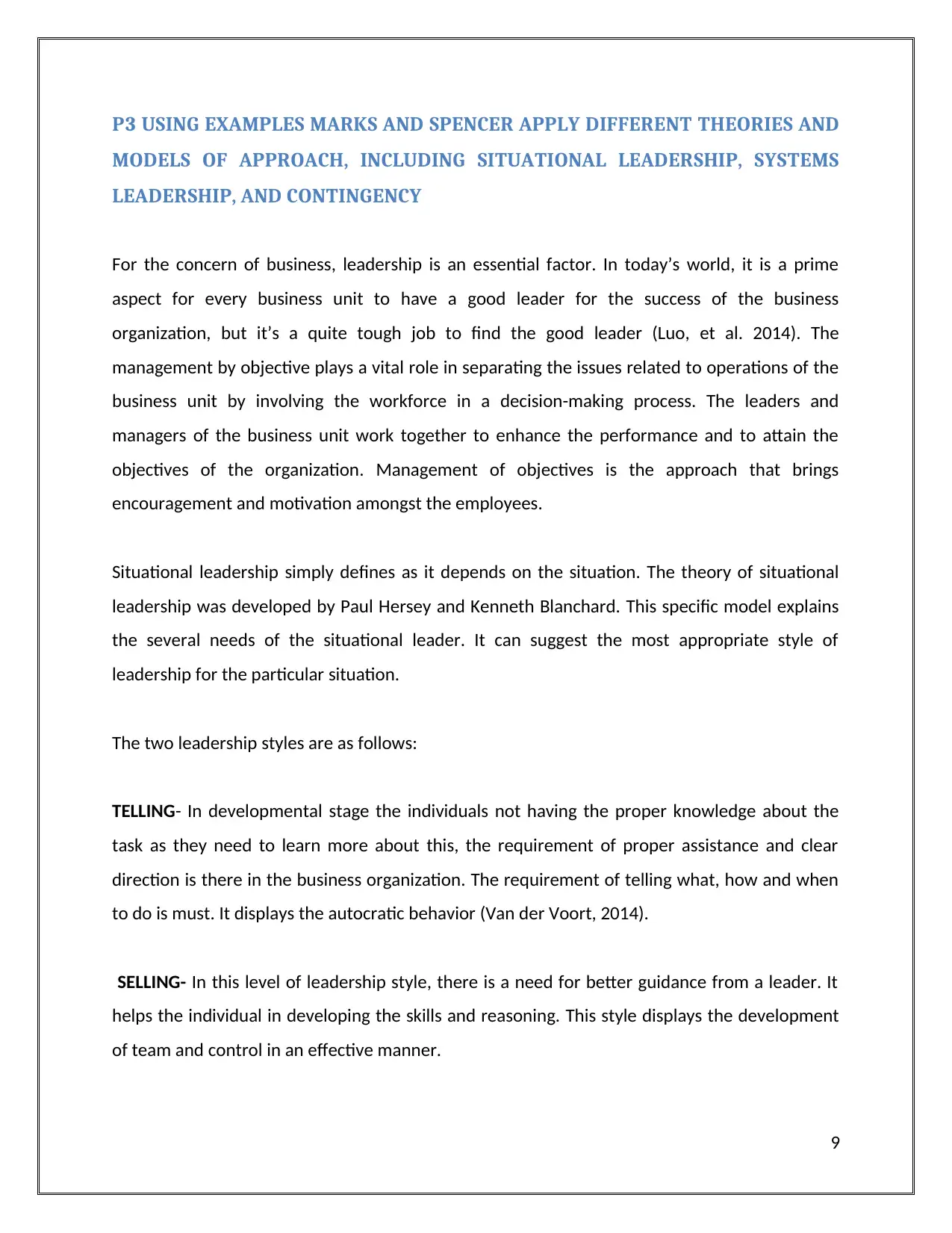
P3 USING EXAMPLES MARKS AND SPENCER APPLY DIFFERENT THEORIES AND
MODELS OF APPROACH, INCLUDING SITUATIONAL LEADERSHIP, SYSTEMS
LEADERSHIP, AND CONTINGENCY
For the concern of business, leadership is an essential factor. In today’s world, it is a prime
aspect for every business unit to have a good leader for the success of the business
organization, but it’s a quite tough job to find the good leader (Luo, et al. 2014). The
management by objective plays a vital role in separating the issues related to operations of the
business unit by involving the workforce in a decision-making process. The leaders and
managers of the business unit work together to enhance the performance and to attain the
objectives of the organization. Management of objectives is the approach that brings
encouragement and motivation amongst the employees.
Situational leadership simply defines as it depends on the situation. The theory of situational
leadership was developed by Paul Hersey and Kenneth Blanchard. This specific model explains
the several needs of the situational leader. It can suggest the most appropriate style of
leadership for the particular situation.
The two leadership styles are as follows:
TELLING- In developmental stage the individuals not having the proper knowledge about the
task as they need to learn more about this, the requirement of proper assistance and clear
direction is there in the business organization. The requirement of telling what, how and when
to do is must. It displays the autocratic behavior (Van der Voort, 2014).
SELLING- In this level of leadership style, there is a need for better guidance from a leader. It
helps the individual in developing the skills and reasoning. This style displays the development
of team and control in an effective manner.
9
MODELS OF APPROACH, INCLUDING SITUATIONAL LEADERSHIP, SYSTEMS
LEADERSHIP, AND CONTINGENCY
For the concern of business, leadership is an essential factor. In today’s world, it is a prime
aspect for every business unit to have a good leader for the success of the business
organization, but it’s a quite tough job to find the good leader (Luo, et al. 2014). The
management by objective plays a vital role in separating the issues related to operations of the
business unit by involving the workforce in a decision-making process. The leaders and
managers of the business unit work together to enhance the performance and to attain the
objectives of the organization. Management of objectives is the approach that brings
encouragement and motivation amongst the employees.
Situational leadership simply defines as it depends on the situation. The theory of situational
leadership was developed by Paul Hersey and Kenneth Blanchard. This specific model explains
the several needs of the situational leader. It can suggest the most appropriate style of
leadership for the particular situation.
The two leadership styles are as follows:
TELLING- In developmental stage the individuals not having the proper knowledge about the
task as they need to learn more about this, the requirement of proper assistance and clear
direction is there in the business organization. The requirement of telling what, how and when
to do is must. It displays the autocratic behavior (Van der Voort, 2014).
SELLING- In this level of leadership style, there is a need for better guidance from a leader. It
helps the individual in developing the skills and reasoning. This style displays the development
of team and control in an effective manner.
9
Paraphrase This Document
Need a fresh take? Get an instant paraphrase of this document with our AI Paraphraser
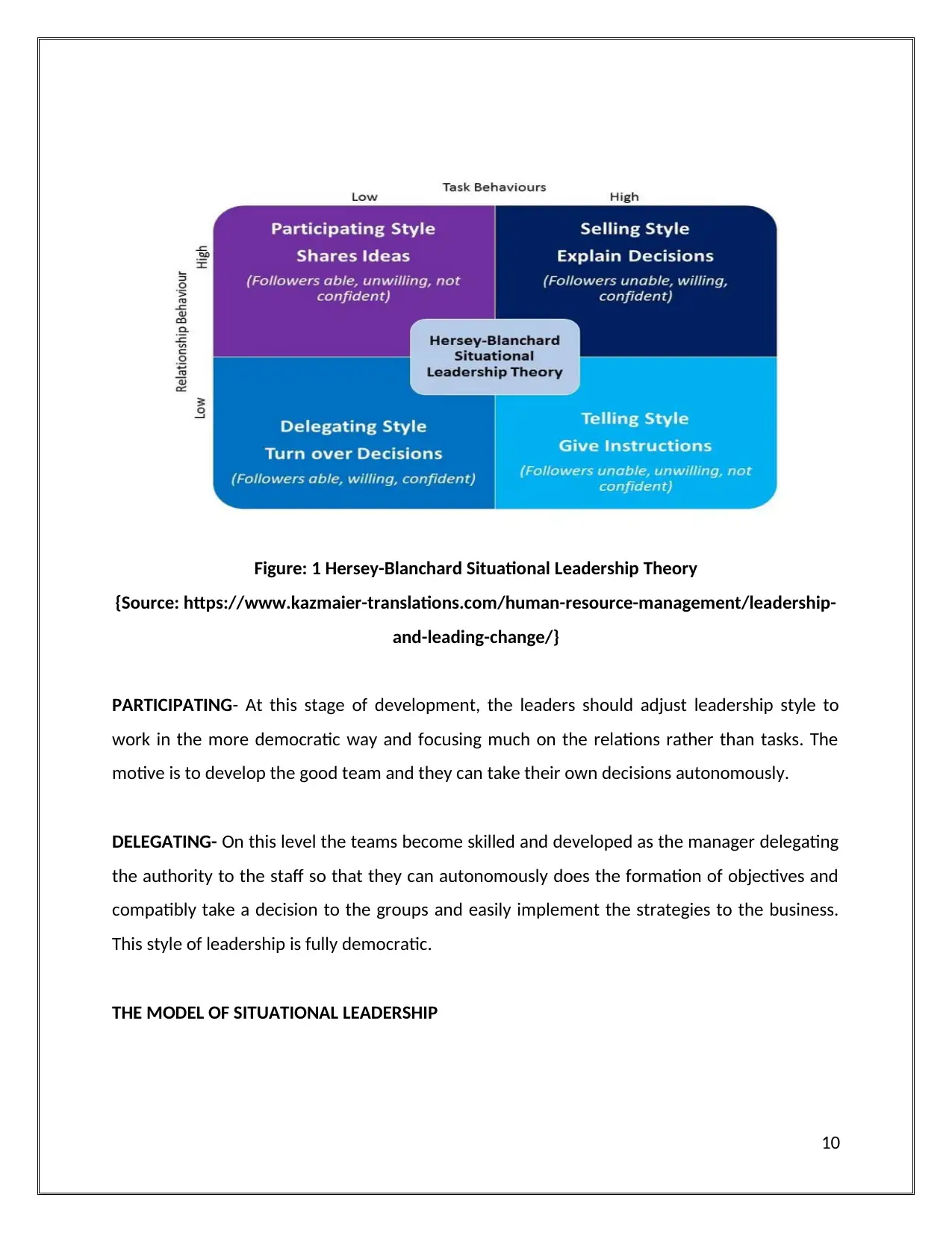
Figure: 1 Hersey-Blanchard Situational Leadership Theory
{Source: https://www.kazmaier-translations.com/human-resource-management/leadership-
and-leading-change/}
PARTICIPATING- At this stage of development, the leaders should adjust leadership style to
work in the more democratic way and focusing much on the relations rather than tasks. The
motive is to develop the good team and they can take their own decisions autonomously.
DELEGATING- On this level the teams become skilled and developed as the manager delegating
the authority to the staff so that they can autonomously does the formation of objectives and
compatibly take a decision to the groups and easily implement the strategies to the business.
This style of leadership is fully democratic.
THE MODEL OF SITUATIONAL LEADERSHIP
10
{Source: https://www.kazmaier-translations.com/human-resource-management/leadership-
and-leading-change/}
PARTICIPATING- At this stage of development, the leaders should adjust leadership style to
work in the more democratic way and focusing much on the relations rather than tasks. The
motive is to develop the good team and they can take their own decisions autonomously.
DELEGATING- On this level the teams become skilled and developed as the manager delegating
the authority to the staff so that they can autonomously does the formation of objectives and
compatibly take a decision to the groups and easily implement the strategies to the business.
This style of leadership is fully democratic.
THE MODEL OF SITUATIONAL LEADERSHIP
10
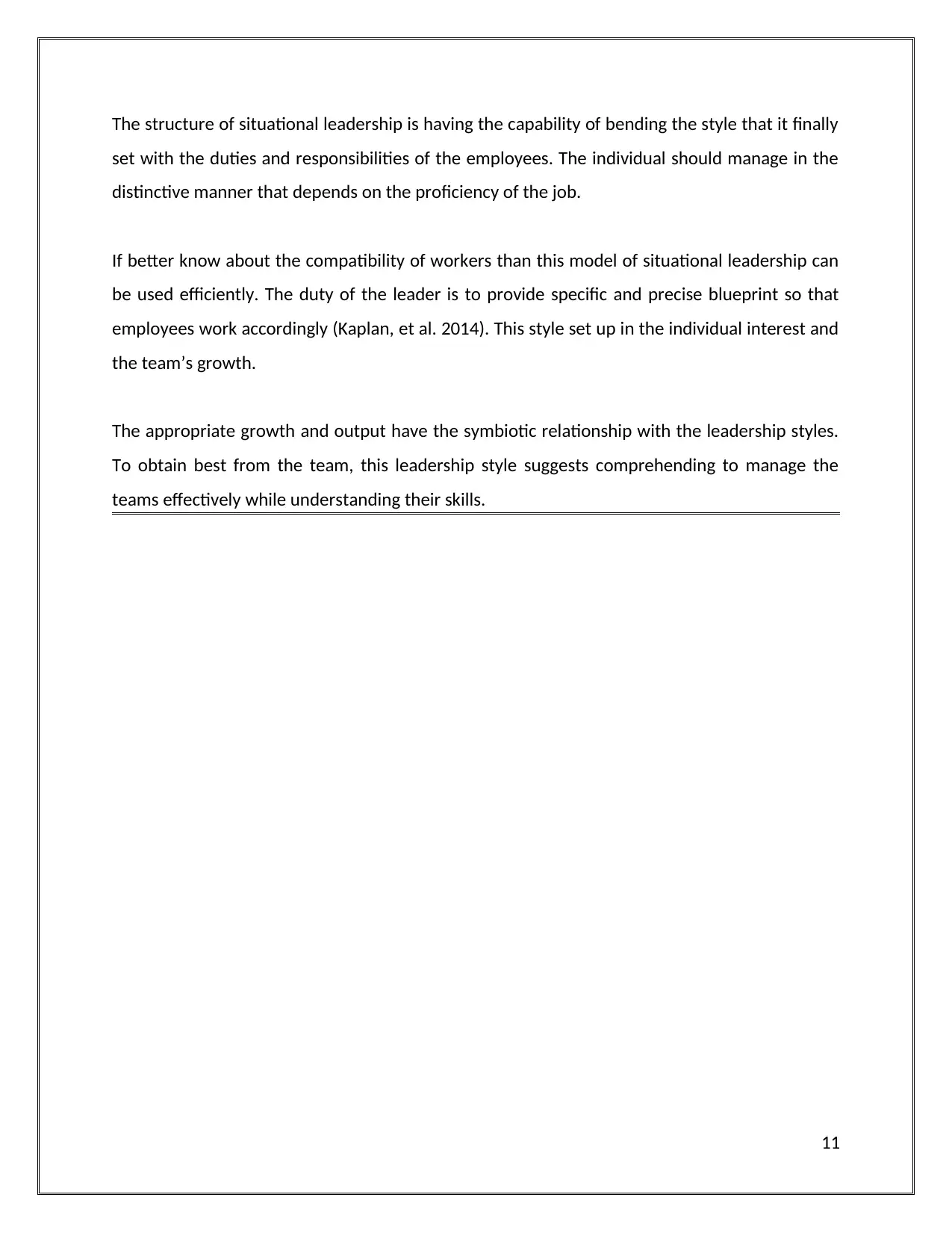
The structure of situational leadership is having the capability of bending the style that it finally
set with the duties and responsibilities of the employees. The individual should manage in the
distinctive manner that depends on the proficiency of the job.
If better know about the compatibility of workers than this model of situational leadership can
be used efficiently. The duty of the leader is to provide specific and precise blueprint so that
employees work accordingly (Kaplan, et al. 2014). This style set up in the individual interest and
the team’s growth.
The appropriate growth and output have the symbiotic relationship with the leadership styles.
To obtain best from the team, this leadership style suggests comprehending to manage the
teams effectively while understanding their skills.
11
set with the duties and responsibilities of the employees. The individual should manage in the
distinctive manner that depends on the proficiency of the job.
If better know about the compatibility of workers than this model of situational leadership can
be used efficiently. The duty of the leader is to provide specific and precise blueprint so that
employees work accordingly (Kaplan, et al. 2014). This style set up in the individual interest and
the team’s growth.
The appropriate growth and output have the symbiotic relationship with the leadership styles.
To obtain best from the team, this leadership style suggests comprehending to manage the
teams effectively while understanding their skills.
11
⊘ This is a preview!⊘
Do you want full access?
Subscribe today to unlock all pages.

Trusted by 1+ million students worldwide
1 out of 21
Related Documents
Your All-in-One AI-Powered Toolkit for Academic Success.
+13062052269
info@desklib.com
Available 24*7 on WhatsApp / Email
![[object Object]](/_next/static/media/star-bottom.7253800d.svg)
Unlock your academic potential
Copyright © 2020–2025 A2Z Services. All Rights Reserved. Developed and managed by ZUCOL.





